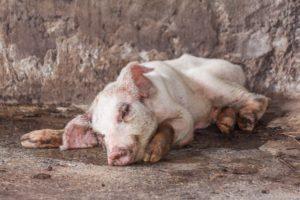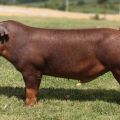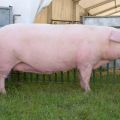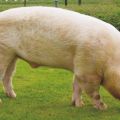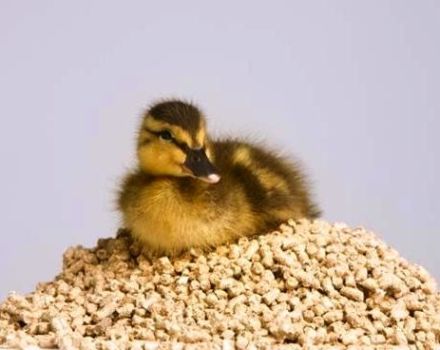Description and characteristics of pigs of the Mirgorod breed, features of the content
In the middle of the 20th century, on the territory of Ukraine, through selective work, experts bred a breed of pigs, which later became known as Mirgorod. Gradually, these pets, unpretentious in care, became known far beyond the borders of their homeland. What are the external features of the representatives of this breed and how to properly feed, keep and breed Mirgorod pigs?
Description and characteristics of the breed
The Mirgorod pig is a hybrid breed developed by the method of breeding domestic pigs. The latter crossed with purebred Berkshire boars and representatives of the large white breed. The results of this crossing were short-eared animals with a variegated color, which are able to accumulate a lot of subcutaneous fat.
The appearance of Mirgorodians:
- medium-sized head;
- deep chest;
- small, forward-looking ears;
- wide back;
- rounded fleshy hams;
- strong legs of medium length.
The coloration of Mirgorod pigs combines light and dark shades, for example, white, black or red with small light specks. The body length of an adult is 168 centimeters, the weight of a three-year-old boar is about 280 kilograms, sows can weigh up to 220 kilograms.
Young animals fed for meat gain 700-800 grams of weight daily, and by six months the piglets can grow up to a centner.
Further, the weight gain is carried out by the accumulation of subcutaneous fat, the thickness of which by the age of one year of age of the animal can be 3 cm. The fat of Mirgorod swine is recognized as the best in taste. But the demand for fatty meats is steadily declining. To increase the yield of pure meat, experts are conducting breeding work, crossing the Mirgorodians with bacon breeds.
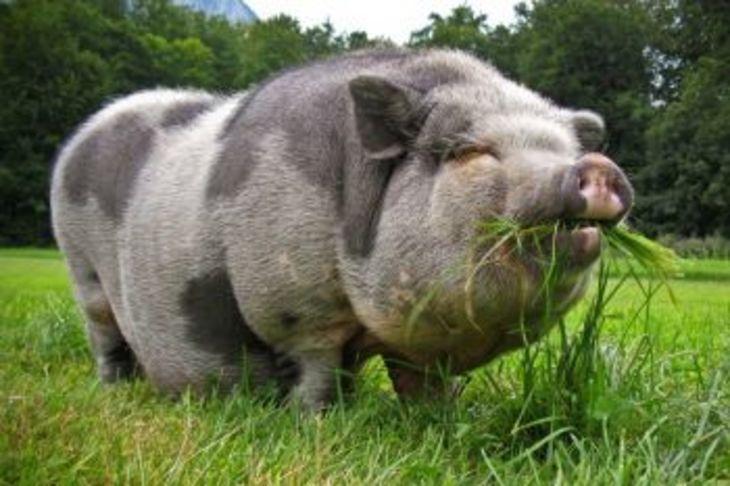
Pros and cons
There are certain advantages and disadvantages in breeding Mirgorod gilts.
Pros of the breed:
- good health, resistance to many diseases;
- good adaptation to climatic conditions;
- weight gain rate;
- good transport tolerance.
Disadvantages:
- low percentage of meat;
- mediocre taste of meat.

Tips for maintenance and care
Before purchasing a pig, you should make sure that the selected individual of the Mirgorod breed is purebred. The baby must reach the age of one month, look absolutely healthy. A young individual must certainly be vaccinated. Experts recommend purchasing 2-3 piglets at once - together it will be easier for the kids to adapt to the new home. Mirgorod pigs are unpretentious creatures in comparison with their relatives of other breeds. Nevertheless, there are some requirements for their content:
- Mirgorodians must be kept in a warm and airtight barn. It is important to maintain a stable temperature and humidity in the animal home.
- The ventilation system must be built in such a way that there is no draft in the barn.
- The pigs' dwelling should be cleaned three times a week and once a month whitewashed with lime.
- Animals should graze outdoors daily if the weather is favorable. Deprived of an active lifestyle and not receiving fresh feed, pigs can begin to suffer from rickets. At the same time, the Mirgorod breed does not like direct sunlight - they can burn the delicate skin of animals. Therefore, when walking, animals should be able to hide in the shade.
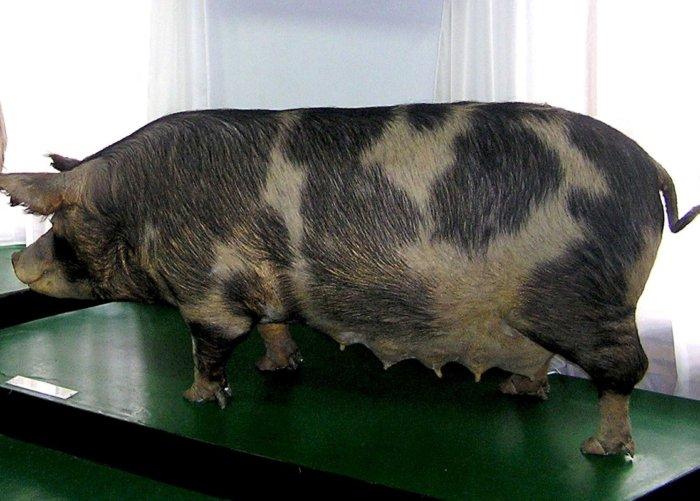
Diet
The menu of Mirgorod pigs should include:
- green forage (fresh hay, grass);
- dairy products, in particular whey;
- cereals;
- fruits and vegetables;
- chopped root vegetables (turnips, carrots, etc.);
- boiled potatoes (mashed).
Due to their solid mass and strong constitution, Mirgorod pigs need strengthening of the limbs. To improve the structure of bone tissue, it is useful to mix fish and meat meal into pet food - a source of minerals. Such complementary foods are especially important in winter, when the animals do not have enough juicy greens and walking. Adults are fed two to three times a day, piglets - four to five.
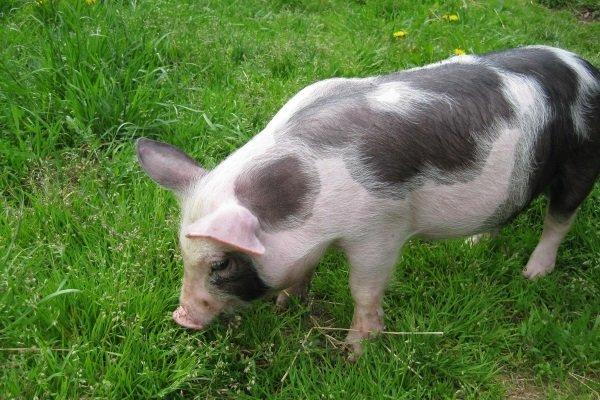
Breeding rules
Mirgorod pigs are quite fertile pets. It is possible to have animals from 10 months, but experts recommend delaying with this, so that the number of newborn pigs is greater. Each of the sows can give birth to 10-12 babies at a time. Mirgorod piglets are actively gaining weight on breast milk from the first day of life.
The average gestation period for a sow is 110-115 days. In the second half of pregnancy, the Mirgorod pig is protected from the rest of the livestock and is not allowed to walk. The expectant mother should eat a variety of foods full of nutrients.
Shortly before the birth of the babies, the female begins to carry hay to the corner of the corral and build a kind of nest. The expectant mother begins to lie more often, and her mammary glands swell.
Farrowing is often easy and uncomplicated. The farmer needs only a little help to the woman in labor - to clear the mouth, nostrils and ears of the newborns from the remnants of mucus, and after an hour the piglets can be returned to the mother. Survival rates of young animals are impressive - 95%. Milk of Mirgorod sows contains a lot of immunoglobulin, which contributes to the development of strong immunity in piglets.
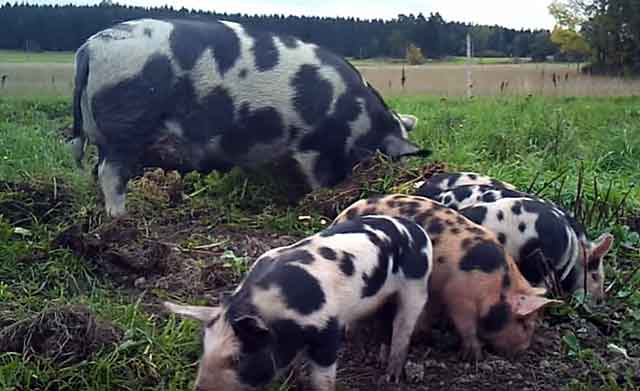
Diseases and treatment
Mirgorod pigs have strong immunity, so they rarely get sick. And yet, representatives of this breed can suffer from characteristic diseases that sometimes occur even with proper care from the owner:
- scabies;
- poisoning;
- helminths;
- avitaminosis;
- lung disease.
The risk of contamination of Mirgorod pigs with helminthiasis can be reduced by cleaning the animals' bodies every six months. The veterinarian will be able to choose the best drugs. Bathing pigs once every three months will help prevent scabies.
Lung pathologies can be prevented by controlling the hypothermia of animals by eliminating drafts in their home. Poisoning is a consequence of an incorrectly selected diet, for the same reason there is a lack of vitamins (vitamin deficiency).
